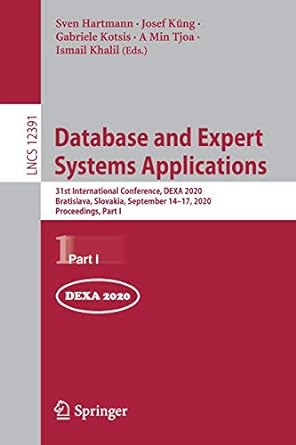Question
Your team has been hired to analyze the requirements of a small book store. The owner of the store buys and sells only premium used
Your team has been hired to analyze the requirements of a small book store. The owner of the store buys and sells only premium used paperbacks. She would like to expand her business by offering to sell and buy books over the Internet. She realizes that she will have to automate her manual processes. Currently, she keeps track of the books in the store by making an entry in an alphabetized file. She keeps track of customers by noting in a file their names, addresses, phone numbers, email addresses and credit worthiness. She allows credit worthy customers to charge their purchases and bills them once a month. All others pay cash. Milestone 1: Analyze the bookstores current system by drawing a context level DFD. Show the external entities and the data flows into and out of the system. Explode your context diagram to show processes internal to the system. At this level also show the data stores. Make sure you have no black holes or miracles. To fully describe the system, you should explode one or more internal processes to show sub-processes. The set of diagrams you have just created is called the analysis data flow diagram. The analysis DFD helps you document the existing system and begin thinking about improvements. At this point, you should create a list of requirements for the new system. Will new inputs be required? New outputs? Are any new processes needed? Dont think in terms of just converting existing processes and data stores to programs and files. You are trying to discover if new processes or data stores are needed. Also, examine the processes and data flows of the analysis DFD to see if any are no longer useful. Write the requirements in a numbered list. Each requirement is a statement of what the new system should do. This list is called a requirements definition. After you have completed your requirements definition. Create a design data flow diagram. The design data flow diagram will reflect only the processes and data stores needed to implement your requirements definition. It may show new processes. It may show new data stores. However, keep in mind that the analysis DFD may be just fine as a design DFD if you did not identify anything new in your requirements definition. Begin just as you did with the analysis DFD; create a context level diagram showing the external entities and the data flows into and out of the new system. Explode this diagram to show processes and data stores. Explode one or more processes to show sub-processes. The deliverables for Milestone 1 are: An analysis DFD A requirements definition A design DFD
Step by Step Solution
There are 3 Steps involved in it
Step: 1

Get Instant Access to Expert-Tailored Solutions
See step-by-step solutions with expert insights and AI powered tools for academic success
Step: 2

Step: 3

Ace Your Homework with AI
Get the answers you need in no time with our AI-driven, step-by-step assistance
Get Started


